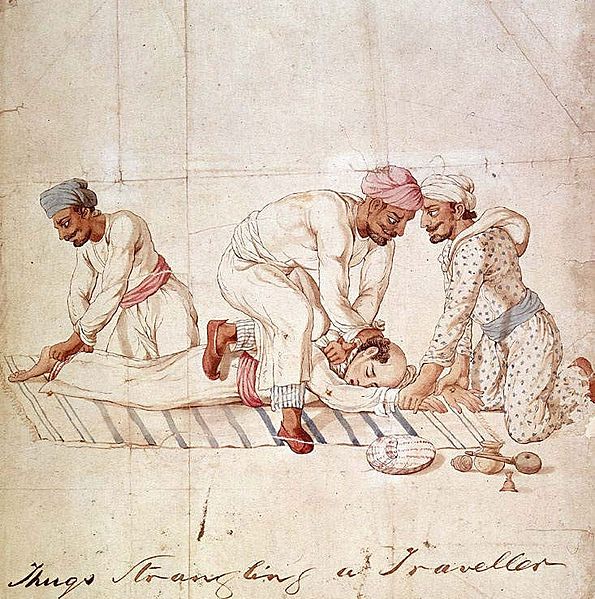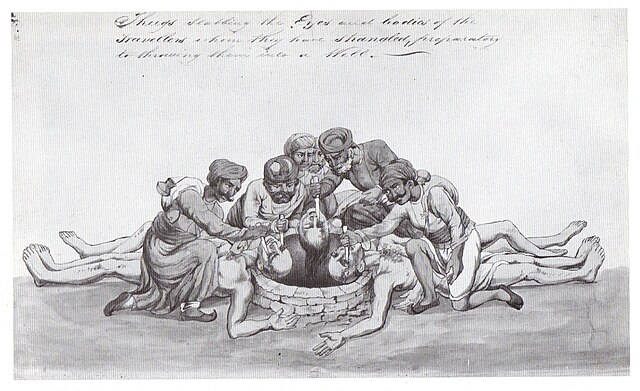Thuggee and Dacoity Suppression Acts, 1836–48
The Thuggee and Dacoity Suppression Acts, 1836–48 in British India under East India Company rule were a series of legal acts that outlawed thugee—a practice in North and Central India involving robbery and ritualized murder and mutilation on highways—and dacoity, a form of banditry prevalent in the same region, and prescribed punishment for the same.
A watercolour by an unknown Indian artist from the early 19th century purporting to show a group of thugs in the process of distracting a traveller on a highway in India while he is about to be strangled with a ligature.
Watercolour by the same artist purporting to show three thugs in the process of strangling the traveller: one holds the feet, another the hands, while a third tightens the ligature around the neck.
A sketch by an unknown artist from the early 19th century purporting to show a group of thugs stabbing the eyes of three travellers they have recently strangled, preparatory to further mutilation and deposition in the well.
Dacoity is a term used for "banditry" in the Indian subcontinent. The spelling is the anglicised version of the Hindi word डाकू (daaku); "dacoit" is a colloquial Indian English word with this meaning and it appears in the Glossary of Colloquial Anglo-Indian Words and Phrases (1903). Banditry is criminal activity involving robbery by groups of armed bandits. The East India Company established the Thuggee and Dacoity Department in 1830, and the Thuggee and Dacoity Suppression Acts, 1836–1848 were enacted in British India under East India Company rule. Areas with ravines or forests, such as Chambal and Chilapata Forests, were once known for dacoits.
Daku (Dacoit) written in Samrup Rachna Calligraphy
A family of dacoits





